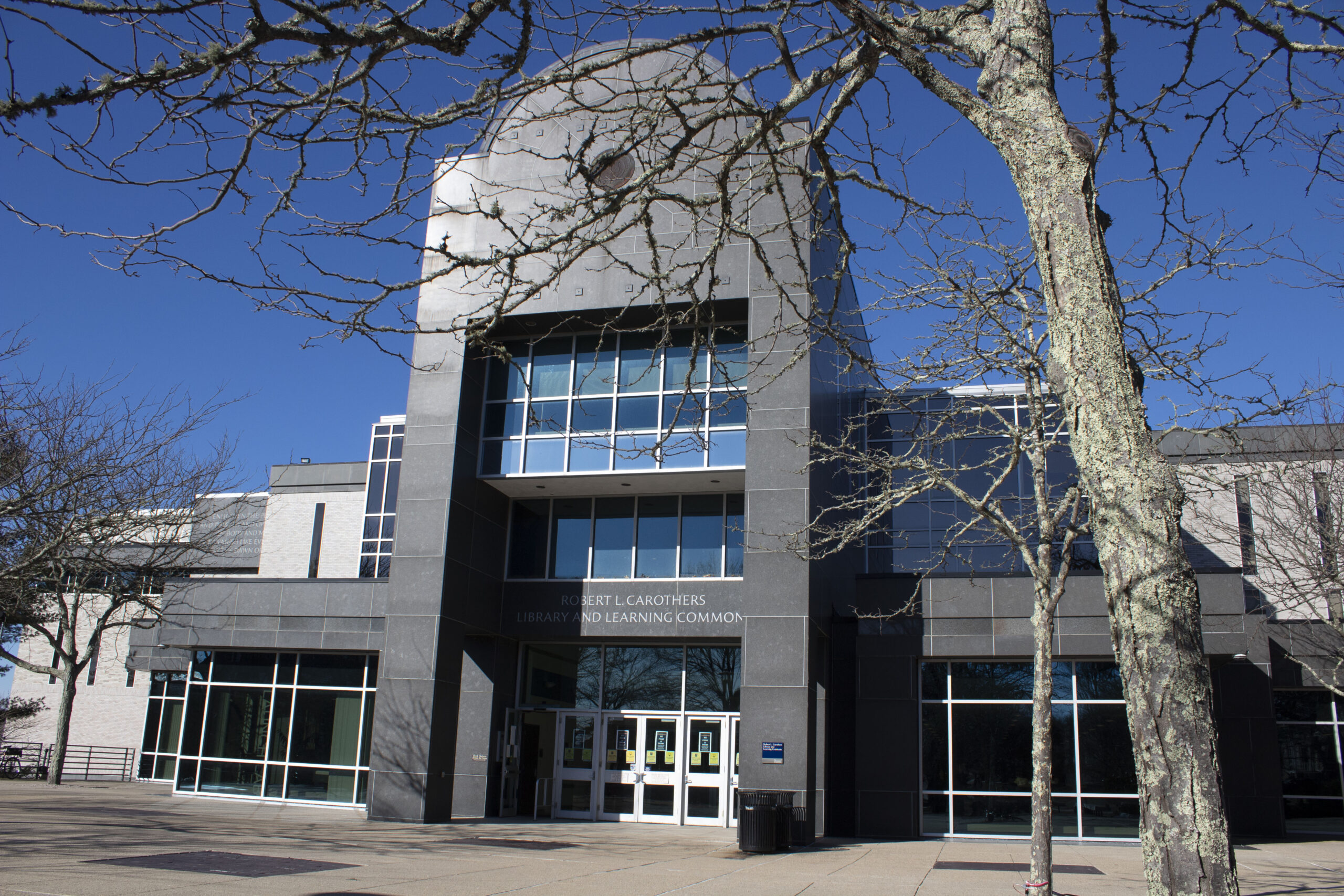Our main library, like the president it was named after, plans on continuing to be a resource for students for a long time. PHOTO CREDIT: Hannah Charron
One building that connects every student at the University of Rhode Island is Robert L. Carothers Library and Learning Commons with the constant renovations to engage students in their learning.
The building known today as the University’s main library, with branch libraries in the Providence and Narragansett Bay campuses, is not where its history began. College Hall, presently known as Davis Hall, actually held the library’s first books back in 1891.
From that point forward, the library’s books moved all over campus from College Hall, to Lippitt Hall, to Edwards Hall, to Ranger Hall and finally to Green Hall because there was no designated space for a library at the time, according to the library website.
In 1960, Rhode Island voted for a bond issue, a loan given by the people to the state government, of $2 million for the construction of the main library.
“At that point around 1992 or 1993 another bond went forward and they built the extension that wrapped around the entire building,” Mark Dionne, an archivist in the library, said.
As time went on, more additions were made, such as the second and third floor and the mezzanine storage facility. Finally, URI’s Green Hall’s administration named the building — Robert L. Carothers Library and Learning Commons.
“The library had no involvement in what the building was going to be named,” Dionne said. “In fact, they didn’t find out until it was published in the newspaper.”
Robert L. Carothers was the longest-tenured president in URI’s history, serving from 1991 until 2009. During his time here, around $700 million was invested in buildings and improvements on all campuses affiliated with URI.
These investments led to approximately a 12 percent increase in undergraduate enrollment. Through the use of fundraisers and charities, he helped grow the University’s endowment funds from $12 million to $95 million, and in 1995, reinforced the alcohol policy and substance abuse prevention programs.
Additions were constantly made to the library after its initial construction, and although new floors were not added in recent years, there have been some changes.
“The Learning Commons is the extension of services that they provide down on the first level,” Dionne said. “Growth has gone into the AI Lab and the latest addition was from a few years ago, DataSpark, which is a data analysis company.”
In recent years, the library has added the Launch Lab, an innovation pathway for students interested in entrepreneurship, and Makerspace, a classroom with access to 2D/3D design, virtual reality and other tools.
“It’s super cool seeing all the new rooms being added like the VR and AI stuff. I go there to do projects for my classes,” junior Aidan Sussillo said. “It’s definitely different than the homework I’m used to doing, but it’s exciting to see the advancements.”
The last known construction made in the library was in 2020, with eleven new study rooms built in the lower level. They are different from other study rooms since they essentially have no roof.
“The pandemic made it difficult for students to remain in an enclosed space, and the new study rooms have no ceiling covers, allowing for airflow to remain constant and keeping students safe,” Liz Smith, Head of Circulation and Reserves, said.
Even though the library has been modified numerous times and may continue to be modified in the future, some students still find it to be the place for their schoolwork and to appreciate their campus.
“The library is the best place to be productive and the campus looks beautiful from the third floor,” junior Devin Campbell said.
The Robert L. Carothers Library and Learning Center may not be one of the oldest buildings on campus, but with its name and the archives it holds, it is home to a lot of URI’s history.





